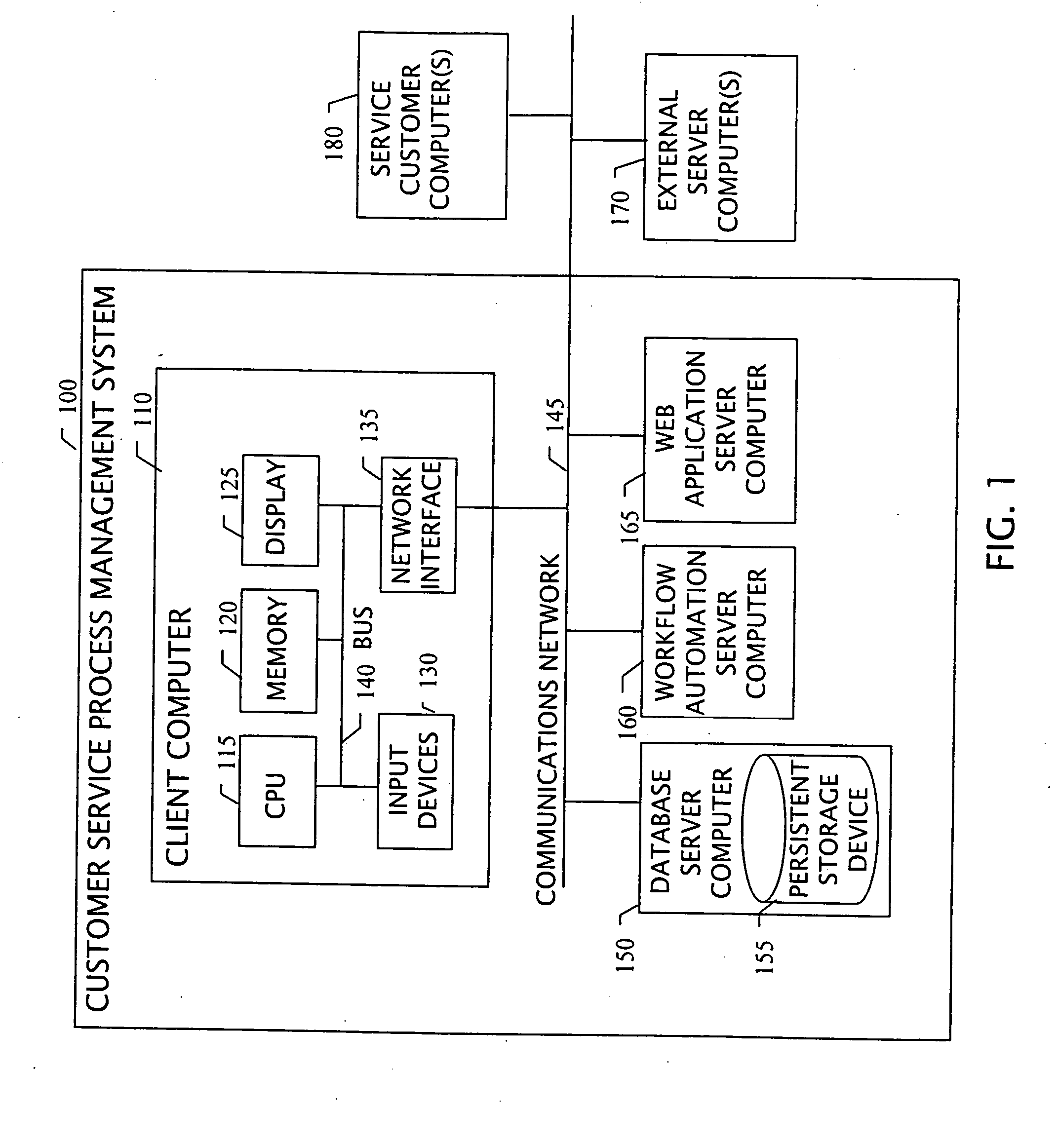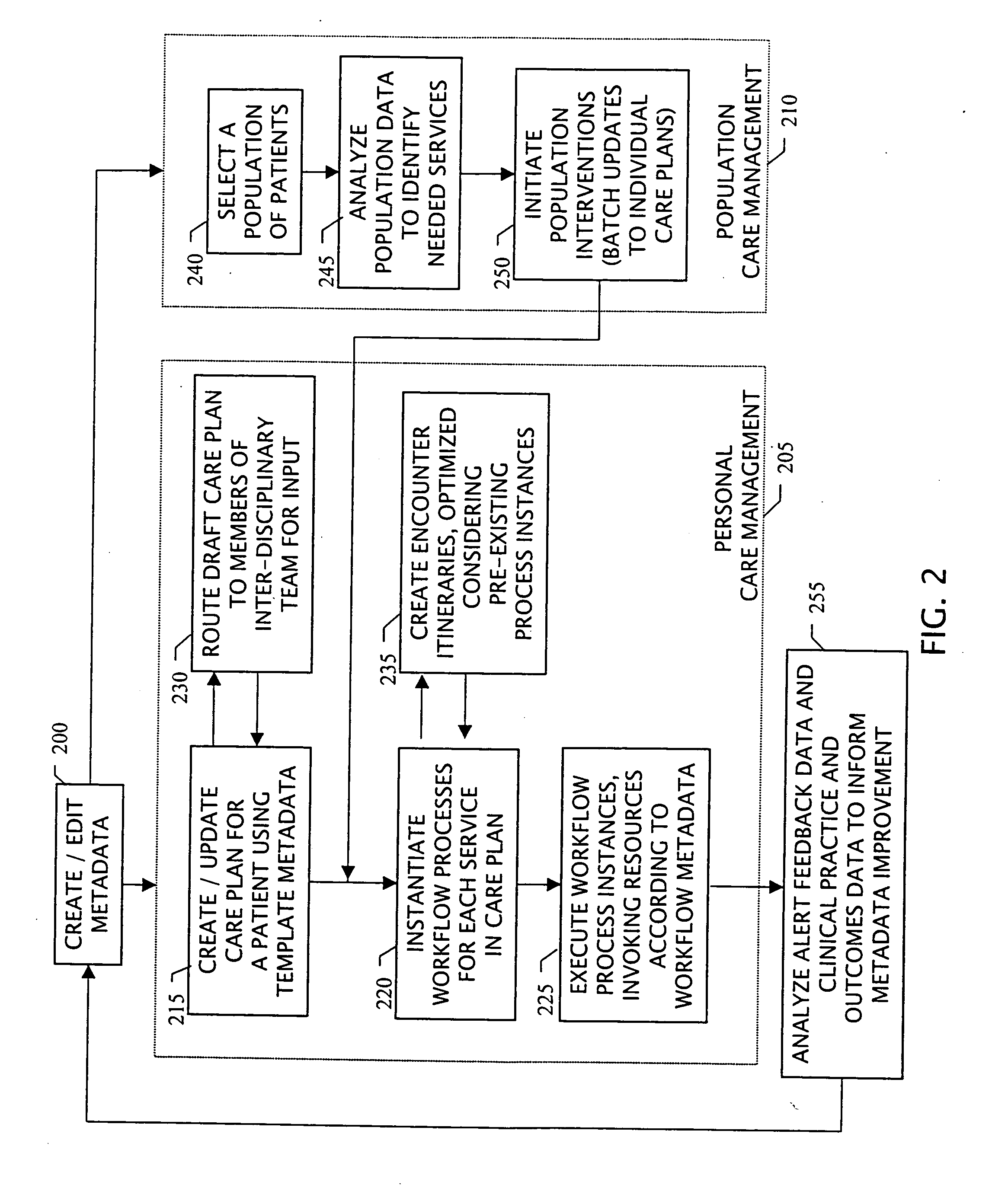Method and system for customer service process management
a customer service and process management technology, applied in the field of computer systems, can solve the problems of poor linkage or integration between the two work categories (developing plans/proposals and service delivery), inadequate to use for complex services planning, and not up to the task of managing the creation of an overall plan of care for a patien
- Summary
- Abstract
- Description
- Claims
- Application Information
AI Technical Summary
Benefits of technology
Problems solved by technology
Method used
Image
Examples
Embodiment Construction
[0037] The figures depict a preferred embodiment of the present invention for purposes of illustration only. One skilled in the art will readily recognize from the following discussion that alternative embodiments of the structures and methods illustrated herein may be employed without departing from the principles of the invention described herein.
[0038] Referring to FIG. 1, there is shown a system 100 for managing customer service processes in accordance with the present invention. The major components of system 100 include at least one client computer 110, such as a Pentium based personal computer, containing a central processing unit (CPU) 115, memory 120, at least one display device 125, at least one input device 130 (such as a keyboard and a mouse pointing device), and a network interface 135. These components of the client computer 110 are interconnected via a bus 140. Customer service providers and customers directly interact with client computers such as the one illustrate...
PUM
 Login to View More
Login to View More Abstract
Description
Claims
Application Information
 Login to View More
Login to View More - R&D
- Intellectual Property
- Life Sciences
- Materials
- Tech Scout
- Unparalleled Data Quality
- Higher Quality Content
- 60% Fewer Hallucinations
Browse by: Latest US Patents, China's latest patents, Technical Efficacy Thesaurus, Application Domain, Technology Topic, Popular Technical Reports.
© 2025 PatSnap. All rights reserved.Legal|Privacy policy|Modern Slavery Act Transparency Statement|Sitemap|About US| Contact US: help@patsnap.com



